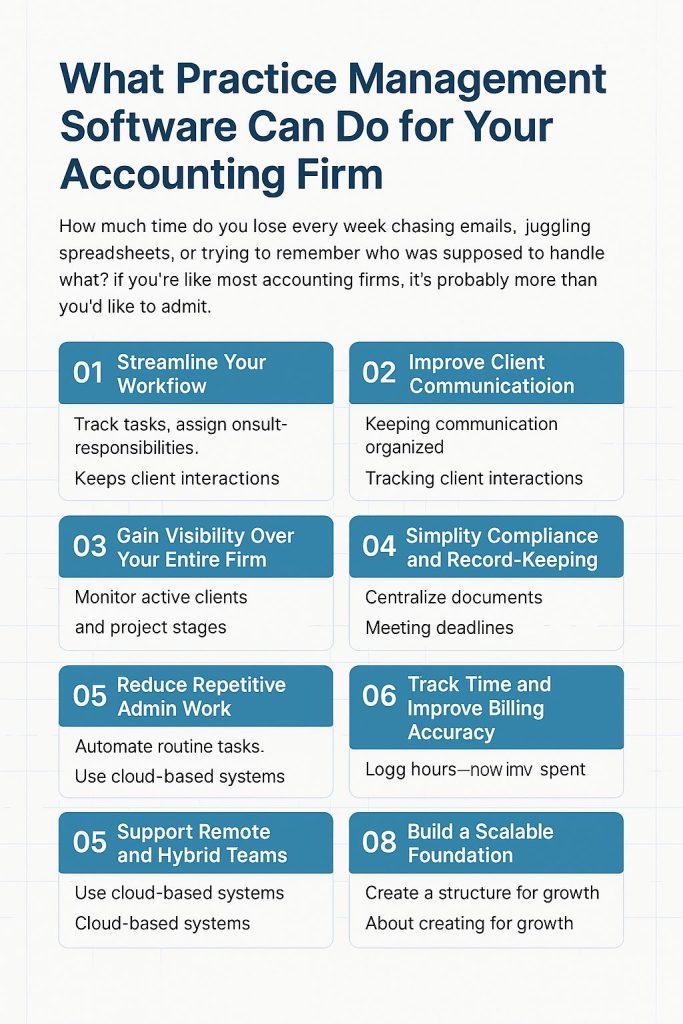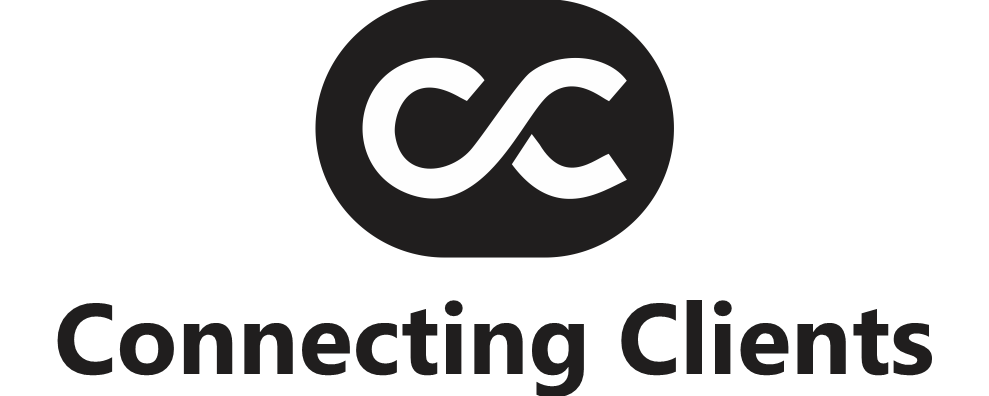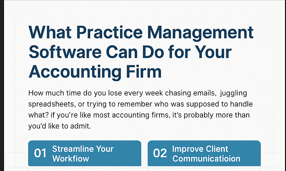What Practice Management Software Can Do for Your Accounting Firm
How much time do you lose every week chasing emails, juggling spreadsheets, or trying to remember who was supposed to handle what? If you’re like most accounting firms, it’s probably more than you’d like to admit.
Managing a team, delivering work on time, and keeping clients happy can quickly spiral into a chao tic mess without the right systems in place. That’s where practice management software steps in, not as a magic fix, but as a solid backbone that helps everything run smoother.
Streamline Your Workflow
One of the biggest struggles for growing firms is staying on top of client work without things falling through the cracks.
Practice management software helps you:
- Track tasks – No more sticky notes or scattered spreadsheets. Everyone knows what needs to be done and when.
- Assign responsibilities – You can easily delegate work, check on progress, and reassign if someone’s overloaded.
- Standardize processes – With templates and repeatable workflows, you don’t need to reinvent the wheel every time a new client signs on.
It’s not just about speed, it’s about consistency. When your team follows the same steps for every client, you reduce mistakes and deliver better service.
Improve Client Communication
Clients expect quick responses and clear updates. If your inbox is overflowing and your calendar’s a mess, it’s easy to fall behind.
The right system makes communication easier by keeping everything in one place. You can track all client interactions, notes, files, and updates without digging through email chains or hopping between apps.
And since team members can see the full client history, they can step in to help even if someone’s away. That means no more delays, missed messages, or confusion over who said what.
Gain Visibility Over Your Entire Firm
As your firm grows, it gets harder to see what’s going on without micromanaging. You want to know that work is moving forward, deadlines are being met, and clients are satisfied, without constantly asking for updates. Practice management software gives you a clear view of your entire operation. You can check:
- Which clients are active
- What stage each project is in
- Who’s assigned to what
- How long tasks are taking
It’s not just useful for partners or managers. Everyone benefits from knowing where things stand, what’s coming up, and how their work fits into the bigger picture.

Reduce Repetitive Admin Work
Let’s be honest, admin tasks are a time drain. Whether it’s chasing signatures, scheduling meetings, or checking deadlines, they eat into time you could spend on more valuable work.
Good practice management software cuts down on the back-and-forth. You can automate routine tasks like:
- Sending reminders for upcoming deadlines
- Requesting missing documents from clients
- Updating project statuses when steps are completed
The less manual effort required, the more your team can focus on delivering quality accounting and advisory services.
Support Remote and Hybrid Teams
Remote work isn’t going away. Whether your team is fully remote, hybrid, or in-office, you need a central hub that everyone can access, wherever they are.
With cloud-based practice management, location becomes irrelevant. Your team can log in, see their tasks, collaborate on projects, and access client records from anywhere.
This flexibility also makes onboarding smoother. New hires don’t need to be shown ten different systems; they just log in and get started with everything in one place.
Track Time and Improve Billing Accuracy
When you’re billing by the hour or even just trying to understand where your team’s time goes, tracking it manually isn’t going to cut it. Memory fades, small tasks slip through the cracks, and before you know it, hours of work go unrecorded, or worse, misreported.
Practice management software with built-in time tracking solves this by letting your team log hours as they go. It links each time entry directly to a client or project, so there’s no guesswork later. You get a real-time view of where time is being spent and by whom.
This kind of visibility doesn’t just help with billing. It gives you the data to make smarter business decisions. You can see which services are the most time-consuming, which clients require the most attention, and where you might need to adjust pricing or internal processes. If you offer fixed-fee services, those insights help you scope work more accurately and avoid undercharging.
Accurate time tracking also strengthens client relationships. You can show exactly what was done and when, making your invoicing more transparent. That cuts down on disputes and builds trust, especially for long-term engagements.
Simplify Compliance and Record-Keeping
Keeping track of compliance requirements and documentation can easily turn into a full-time job. Between signed engagement letters, client correspondence, regulatory deadlines, and audit trails, there’s a lot that can get lost if your systems aren’t airtight.
Practice management software centralizes everything, so you’re not searching through email chains or digging into old folders to find what you need. Documents are stored securely, conversations are logged, and deadlines are visible to the whole team. You can even automate reminders for key compliance dates to make sure nothing slips through.
This not only helps with everyday organization but also prepares you for audits, internal reviews, or quality checks. Everything is documented, easy to access, and tied back to each client.
Build a Scalable Foundation
Growth is a good thing until your systems start holding you back. Many firms try to scale using the same tools they used when they were smaller. The result? Bottlenecks, delays, and burnout.
What practice management software does is create a structure that actually supports growth. Instead of relying on manual processes or scattered communication, everything runs through one consistent workflow. New staff can onboard faster because they’re walking into an organized system. Managers can delegate with confidence, knowing they’ll still have visibility without needing to micromanage. Partners can plan strategically, using real data to guide decisions.
As client demand increases, your firm won’t have to choose between taking on new business and maintaining service quality. You’ll have the systems in place to do both.
Stronger Systems, Less Stress
The best firms don’t run on hustle alone; they run on structure. When your processes are smooth, your team can work confidently. When your client data is organized, your service feels more professional. And when your time is being tracked and used efficiently, you start seeing the kind of results that move the business forward.
This isn’t about overcomplicating things. It’s about simplifying what you already do, so you can do more of it, without the constant pressure. Better systems mean better outcomes for your team and your clients.







